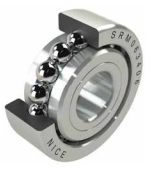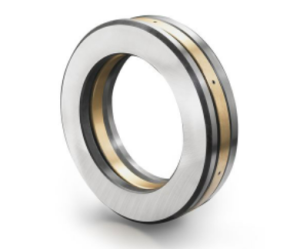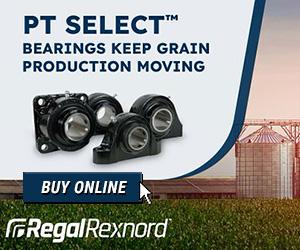When working with different applications, do you know the key differences between ball bearings vs. roller bearings? While these bearings both provide a rolling, anti-friction element and appear similar in style, their use cases are entirely different, especially when it comes to bearing weight.
To take a closer look at the advantages of each type, as well as when to choose one bearing over the other for a given application, we’ve put together a breakdown and comparison of these two types of bearings.
What Are Ball Bearings?
Industrial ball bearings are used in various machinery and manufacturing equipment to facilitate smooth and efficient rotational motion. The bearing itself consists of an outer ring, an inner ring, a set of steel balls, and a cage that keeps the balls evenly spaced. Both the outer and inner rings are usually made of incredibly durable materials, such as steel or ceramic, which are designed to withstand high speeds and heavy loads.
The steel balls within the bearing provide low-friction contact points between the inner and outer rings, enabling movement with minimal resistance and reducing energy lost to friction. The cage of the bearing serves to maintain the proper positioning of the balls, preventing them from touching each other and ensuring uniform distribution of the load.
The Advantages of Ball Bearings
Ball bearings feature a rolling element in the form of spherical balls, which are commonly used in small wheels and hard drives. One of the main benefits of ball bearings is that they are very versatile, as they can rotate on more than one axis. They are also designed for multiple load cases, including pure radial loads, pure axial loads, and combined radial and axial loads.
It’s important to note that, unlike roller bearings, ball bearings operate on a point contact, meaning that they have a very small contact area with the load. This provides a low amount of friction, making ball bearings a great option for applications that require speed, as well as smooth rotational motion.
The Disadvantages of Ball Bearings
Due to their point contact, ball bearings do not operate the best under heavy loads. Because of this, they are primarily used in applications that have higher speeds and lighter loads
However, full-complement ball bearing designs do offer a solution for increasing radial-load capacity. Ball bearings are also more forgiving when it comes to misalignments than roller bearings.
What Are Roller Bearings?
Similar to ball bearings, industrial roller bearings are mechanical devices used to create smooth and efficient motion. However, rather than using a set of steel balls, a roller bearing uses cylindrical rollers to minimize friction.
The cylindrical rollers are positioned between an inner and outer ring and offer a larger contact surface area. They are evenly spaced and guided by a cage to maintain their relative positions. This design allows for greater load-carrying capacity, as well as enhanced axial and radial performance.
The Advantages of Roller Bearings
Unlike ball bearings, roller bearings are available in more than just spherical shapes and have a fixed axis of rotation. In addition to spherical options, roller bearings are also available in cylindrical, tapered, and needle shapes. They are also available in full-complement designs to help with reciprocating motions.
Most notably, industrial roller bearings have a line contact instead of a point contact, which means they offer a greater surface area than ball bearings. This allows roller bearings to take on larger capacities and higher shock resistance without deforming or failing, unlike ball bearings, which can fail after a set number of revolutions.
The Disadvantages of Roller Bearings
Roller bearings are much more limited in movement; therefore, they are not the primary option for axial loads. They’re also made for a higher level of precision in most applications, which makes them more prone to angular misalignment in comparison to ball bearings.
Ball Bearings vs. Roller Bearings: Understanding the Different Use Cases


As mentioned above, ball bearings are ideal for higher speeds and lighter loads, whereas roller bearings are better suited for heavier loads and shocks.
Manufacturers, like RBC Bearings®, provide a wide array of rolling-element bearing options that can be customized for multiple different use cases across industries, including food and beverage processing, mining, general manufacturing, material handling, transportation, aerospace, and more.
Common examples of ball bearing applications can include:
- Automotive engines and electric motors
- Assembly lines
- High-speed machine tooling equipment
- Power tools.
Products like RBC Bearings’ Nice® SRM Series™ precision-machined, single-row ball bearings would be perfect for material handling and packaging equipment. Thin section ball bearings from RBC Bearings also offer solutions and custom designs for the aerospace industry.
For roller bearings, application examples may include the following where heavier loads are required:
- Mining
- Wind turbines
- Construction
- Agriculture
Products like RBC Bearings’ TP Series cylindrical roller thrust bearings are great for crane hooks, oil well swivels, and gearboxes, whereas their Pitchlign® caged heavy-duty needle roller bearings are ideal for cross head bearings applications.


Let’s Get Your Application Rolling Smoothly
Not sure which bearing type is right for your application? For further guidance, contact our knowledgeable team to discuss options that would best suit your needs.
To see IBT’s full selection of the highest-quality rolling-element bearings from dependable brands, visit ShopIBT today!





